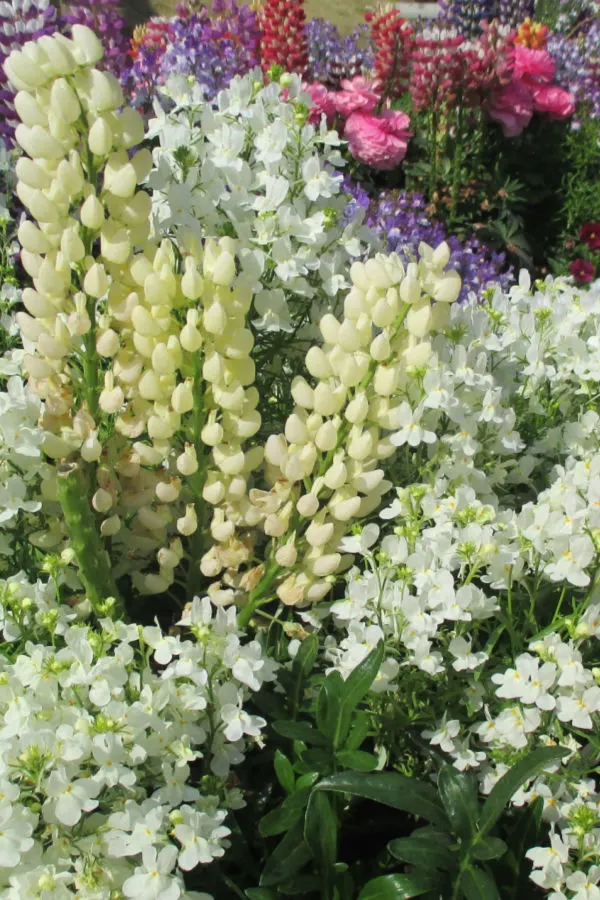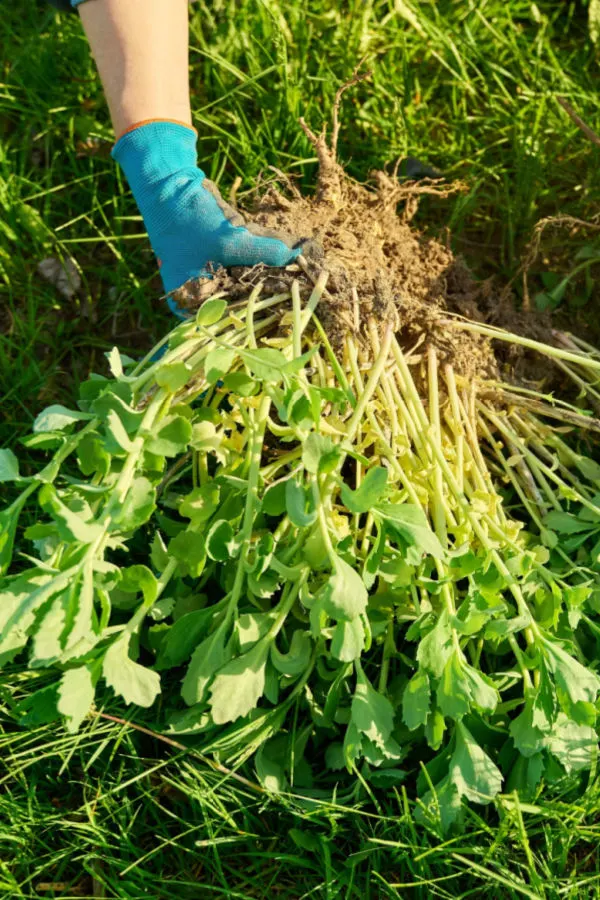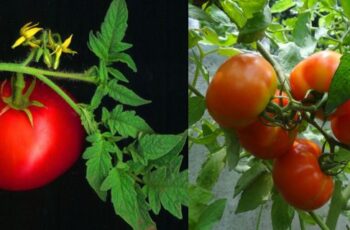Ad Blocker Detected
Our website is made possible by displaying online advertisements to our visitors. Please consider supporting us by disabling your ad blocker.
There is no better way to fill your flowerbeds full of free plants than by digging up, dividing, and transplanting your existing perennials in the fall!

Dividing Perennials In The Fall – How To Create More Plants For Free!
Dividing perennials on a regular basis not only creates additional plants for your landscape, it also helps to keep your plants healthier and manageable. Perennials that remain in the soil for too many years can begin to experience both health and performance issues.
As a perennial’s roots become tangled and crowded from overgrowth, it struggles to absorb the nutrients and moisture it needs from the soil. When this occurs, blooming cycles can slow to a crawl. In fact, in some cases, a plant can stop flowering altogether.
But dividing your perennials every few years, allows plants to have plenty of room for growth – both above ground and below. More importantly, it will pay huge dividends in the performance of your flowerbeds next year, giving you healthier, more robust plants, and a lot more blooms!
How Extra Plants Build Better Flowerbeds! How To Divide Perennials In The Fall
Of course, the bonus of dividing existing perennials is that you are left with additional plants. Or more importantly, free additional plants!
All of those extra divisions can actually help you more than you might realize. Not only will they provide even more color and flower power to your existing beds, they can also be used to create flowerbeds that are easier than ever to maintain.
One of the best ways to create low-maintenance, weed-free flowerbeds is by loading up your beds with plants. The tighter you pack them in, the less chance and space there is for weeds to develop. Nothing helps to keep weeds out naturally more than a thick coat of foliage.
If that wasn’t enough, filling your beds with plants, also means less mulch and mulching chores. Let’s face it, just like plants, mulch can be expensive to purchase! But by filling in large open areas with new plants, your need for mulch diminishes.

In fact, by filling our large bed spaces full of plants, we cut our mulch bill by 80% last year! With all of those perennial dividing advantages in mind, here is a look at how to divide your perennials like a gardening pro this fall!
How To Divide Perennials In The Fall – The Secrets To Success
Select Your Largest Plants For Dividing
The best way to create a strong new start from a perennial plant is to divide it into a healthy, mature plant. Try to select the largest of your plants for dividing. If a plant has good foliage and strong growth habits, divisions from the plant will likely have the same traits as well.
Selecting larger plants also allows for plenty of root area to create new stock. Finally, and perhaps most obvious of all, the larger the plant, the more likely it needs dividing to keep it from becoming overgrown.
Work When The Soil Is Dry – How To Divide Perennials In The Fall
This is one of the biggest tips of all when it comes to dividing perennials in Autumn. Never attempt to transplant after heavy rains or watering. Always allow the soil to dry out before digging up and dividing plants.

Why is this so important? Wet, soggy soil makes it easy for mud to compact around roots. This, in turn, makes it hard for plants to get the oxygen and nutrients needed for survival. Especially when they are trying to re-establish as new transplants.
In addition to avoiding wet soil, when digging out plants, always remove as much of the root mass as possible. The roots of a perennial plant are its lifeline. The more rootstock you remove, the better your chance of survival for new divisions.
Use a sharp shovel to dig an inch or two out from the edge of the root zone. For most perennials, their root zone will be equal to the outermost edge of the foliage. Loosen the soil around the entire plant first, and then dig deep under the roots to pop the plant up from the ground.
Divide Perennials From The Bottom Up – How To Divide Perennials In The Fall
Here is a great tip when dividing plants – instead of trying to split perennial plants from the top down (through the foliage), divide upside down from the roots through the plant.
Once your perennial has been lifted from the ground, turn it over so the foliage is face down. Next, using a sharp shovel or knife, divide by cutting down through the roots. Flipping the plant over, reveals the entire root structure, allowing you to split the plant into even sections.
Although you can split plants with a sharp shovel or even an axe, we prefer using a garden knife. It allows for clean, quick cuts with much more precision. That can be very important for getting a good stock of roots with each transplant.
A few years back, we invested about $25 in a Hori-Hori garden knife, and absolutely love it for this and so many other garden tasks! It slices through the toughest of perennial roots with ease. Product Link: Hori Hori Horticultural Knife
When cutting, try to cut new starts in the same-size sections. By doing this, the new plants will grow to near the same size as one another as they mature. This is great for keeping flowerbeds looking uniform and well-groomed. Finally, remember that smaller sections will need to be divided less often than larger transplants.
Transplant As Fast As Possible – How To Divide Perennials In The Fall
One of the biggest mistakes gardeners make when dividing their plants is to keep their transplants lying around for days before planting. The faster a division is planted, the better chance it will have to settle in and establish roots before winter.
Transplant to a new location as soon as you dig and divide, being careful not to let the roots dry out completely. If you don’t have a place for your new plants just yet, fall is the perfect time to create a temporary holding bed.
We used holding beds last year as we were building the new house at the farm. We weren’t quite ready to plant into beds, but it gave us plants that were already growing and ready this year. It’s also a great way to give a few extra plants away next spring to friends and family as a little spring gift!


